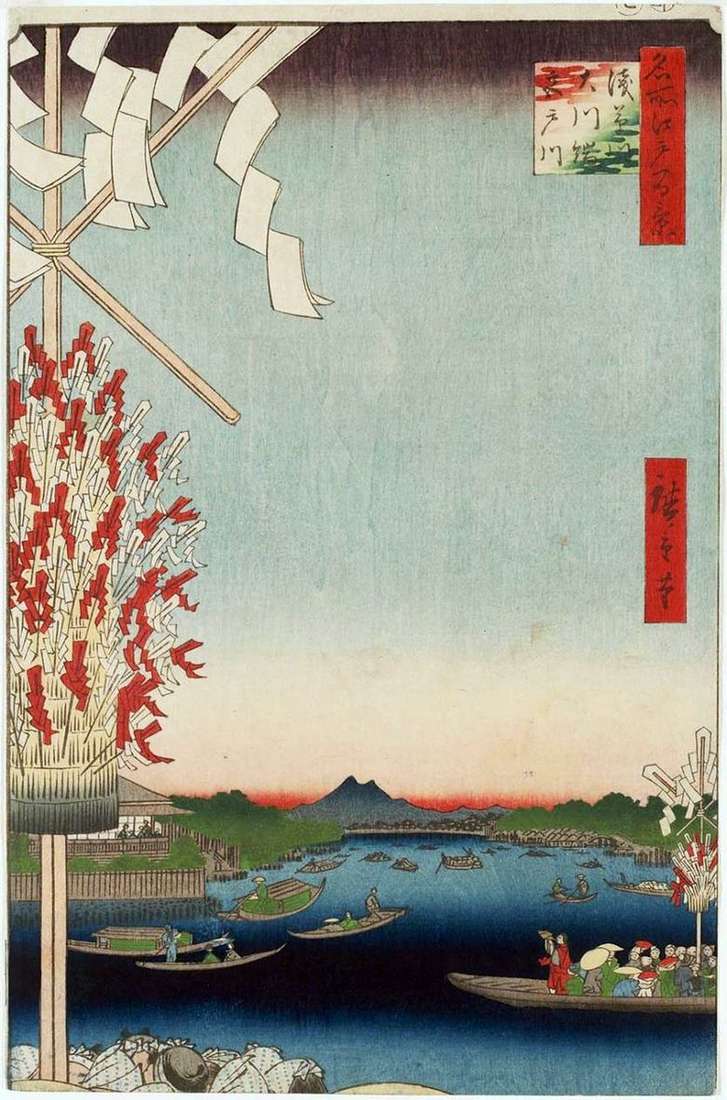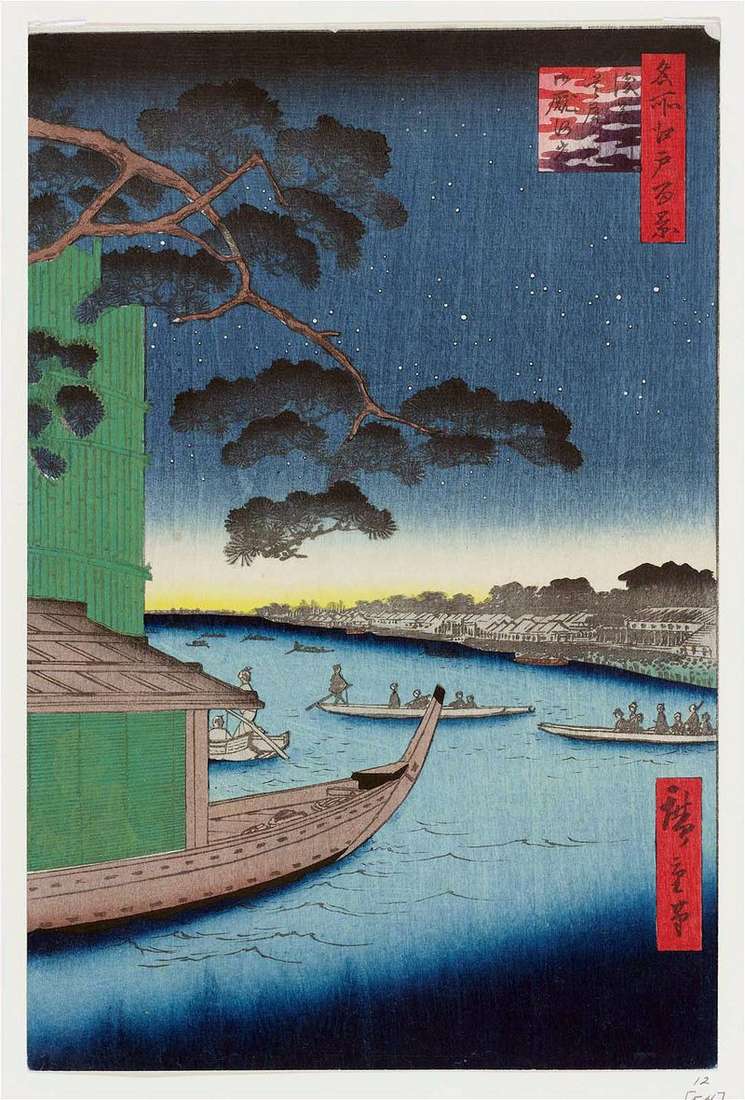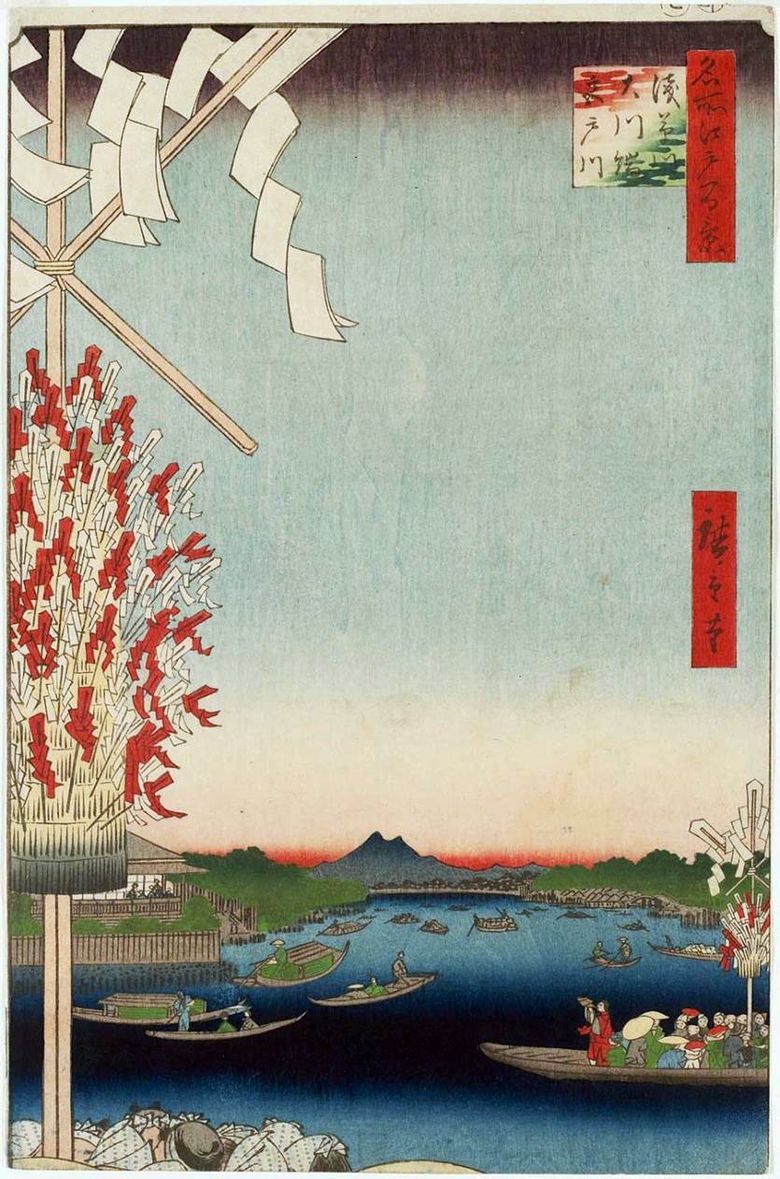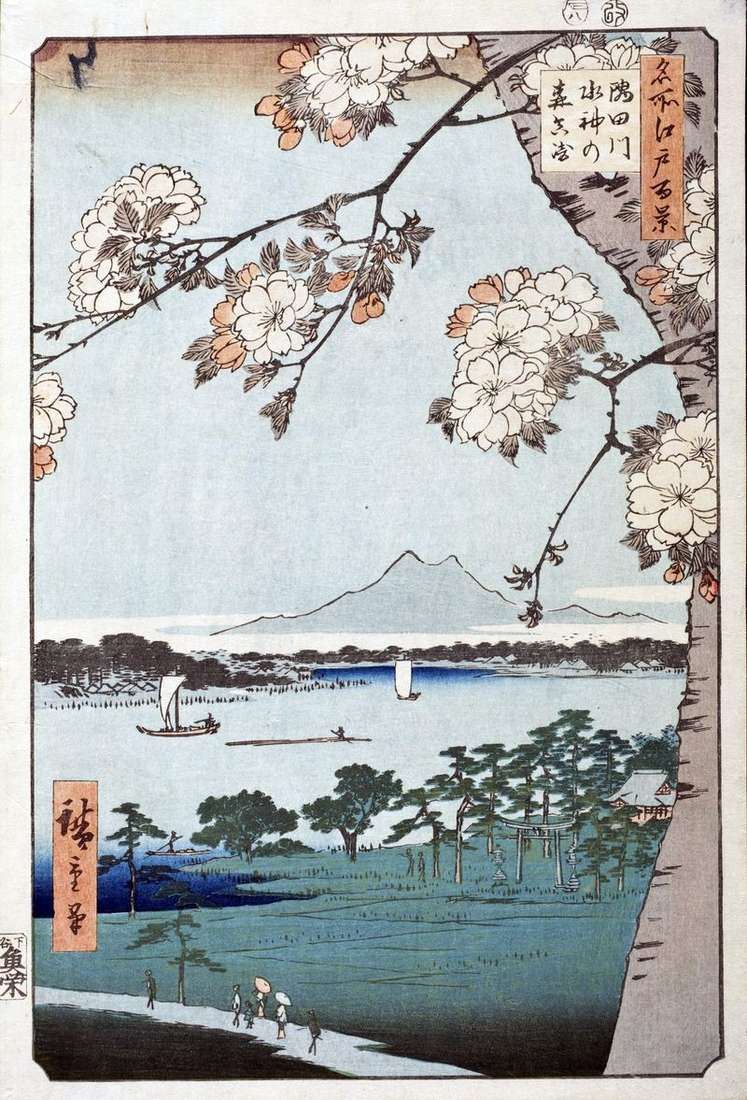
Asakusagawa, Miyatogawa, Okawa – the names of the same river Arakawa. The lower course of the Arakawa River from the bridge of Senju-Ohashi is called Sumidagawa. In the Asakusa area, it changes its name to Asakusagawa, and also to Miyatogawa. Hiroshige depicted one of the seasonal Gedzi holidays, which began on June 27 and lasted until July 17th.
The viewer sees the waterfront of Okavabat through the eyes of people in the boat, a fragment of which is depicted in the foreground on the left. They go to the ceremony of ritual purification of the Kori-tori, and then they will go up to Mount Aoyama. Here, on the top of the mountain was the sanctuary of Afuri-jinja, the main deity of which was Aoyama-Sekison – a deity sending down rain. On the right side of the sheet there is one boat with a monk on the bow with a shell in his hands. This is a yamabushi – a wandering monk.
On both boats there is a bonnet – a structure made from bundles of straw, into which the gohei are stuck – sticks with paper strips. In the background on the left are the windows of Manhachiro restaurant. The strip that runs across the river in the late engraving becomes blue-black, somewhat rough. The overall tone of the engraving is more saturated. The color of the square cartouche also changes.
 Río Asakusagawa, Río Miyatogawa, Terraplén Okavabata
Río Asakusagawa, Río Miyatogawa, Terraplén Okavabata Pine Suube no matzo on the Asakusagawa River, the Ommayagashi Embankment by Utagawa Hiroshige
Pine Suube no matzo on the Asakusagawa River, the Ommayagashi Embankment by Utagawa Hiroshige Rivière Asakusagawa, rivière Miyatogawa, remblai d’Okavabata
Rivière Asakusagawa, rivière Miyatogawa, remblai d’Okavabata The Ohashi Bridge in Senju by Utagawa Hiroshige
The Ohashi Bridge in Senju by Utagawa Hiroshige The Ayasagawa River, “The Bell’s Bell” by Utagawa Hiroshige
The Ayasagawa River, “The Bell’s Bell” by Utagawa Hiroshige Rainfall over the bridge of Ohashi, Atake by Utagawa Hiroshige
Rainfall over the bridge of Ohashi, Atake by Utagawa Hiroshige The Kebasi Bridge and the Takegashi Embankment by Utagawa Hiroshige
The Kebasi Bridge and the Takegashi Embankment by Utagawa Hiroshige Sanctuary of Suidzin-no Mori and the locality of Massaki near the Sumidagawa River by Utagawa Hiroshige
Sanctuary of Suidzin-no Mori and the locality of Massaki near the Sumidagawa River by Utagawa Hiroshige